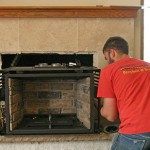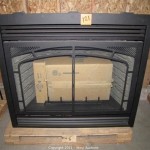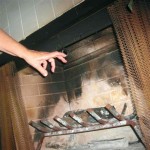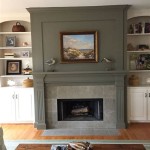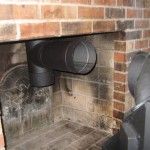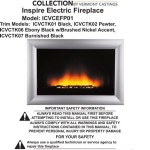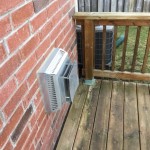Floating Fireplace Mantel Mounting Hardware: A Comprehensive Guide
The allure of a floating fireplace mantel lies in its minimalist aesthetic: a clean, seemingly unsupported shelf gracing the wall above the firebox. Achieving this effect, however, requires robust and carefully selected mounting hardware. The invisible nature of the hardware is paramount to the overall design, but its structural integrity is even more critical, ensuring the mantel's stability and safety. This article provides a detailed exploration of the types of floating fireplace mantel mounting hardware, factors influencing their selection, and best practices for installation.
Selecting the appropriate hardware is not merely a matter of aesthetics; it is a crucial engineering decision. The weight of the mantel itself, along with any displayed objects, must be adequately supported. Failure to choose the right hardware can lead to sagging, instability, or even complete detachment from the wall, posing a significant safety hazard. Therefore, careful consideration of the mantel’s material, dimensions, intended load, and the wall's structural composition is essential before selecting any mounting system.
Understanding the Key Hardware Options
Several types of mounting hardware are available for floating fireplace mantels, each offering different strengths and weaknesses depending on the specific application. A thorough understanding of these options is fundamental to making an informed decision.
Steel Brackets with Hidden Support Arms: This is a popular option, often involving heavy-duty steel brackets that are recessed into the back of the mantel. These brackets feature protruding steel rods or arms that extend into pre-drilled holes in the wall studs. The mantel then slides onto these rods, creating a strong and concealed fixing point. The weight capacity of this system is substantial, making it suitable for heavier mantels, such as those made of solid wood or stone. The number of support arms used is directly proportional to the length and weight of the mantel; longer and heavier mantels will require more support arms to evenly distribute the load. The quality of the steel and the precision of the welds are critical factors determining the long-term reliability of this type of hardware.
Metal Mounting Plates with Internal Brackets: Another alternative involves metal mounting plates that are securely attached to the wall studs. These plates then connect to internal brackets within the mantel. The connection between the plate and the bracket is often achieved using screws or bolts. This method provides a clean, flush finish against the wall and can be particularly useful when dealing with shorter mantels or when the depth available for recessing support arms is limited. The choice of metal for the plates and brackets is crucial; stainless steel or powder-coated steel are preferred for their resistance to corrosion and high strength.
Heavy-Duty Keyhole Brackets: Keyhole brackets offer a simpler, though less robust, mounting solution. These brackets are attached to the back of the mantel, and the keyhole slots align with screws or bolts anchored into the wall studs. The mantel is then hung onto the screws, with the weight supported by the smaller portion of the keyhole slot. While this method is relatively easy to install, its weight capacity is generally lower than that of steel brackets with hidden support arms or metal mounting plates. Therefore, keyhole brackets are best suited for lighter mantels, such as those made of hollow wood or MDF, and where only minimal decorative items will be placed on the mantel.
Critical Factors in Hardware Selection
Beyond the type of hardware, several other factors demand careful consideration to ensure a successful and safe installation.
Mantel Material and Weight: The material and weight of the mantel are arguably the most important considerations. A solid wood mantel will be significantly heavier than a hollow wood or MDF mantel, and a stone mantel will be heavier still. The chosen hardware must be rated to safely support the mantel’s weight, plus a reasonable margin for any items placed on the mantel. Always consult the manufacturer's specifications for the weight capacity of the hardware.
Wall Structure and Stud Location: The wall's structure significantly impacts the type of hardware that can be used. Ideally, the mantel should be supported by wall studs, which provide the most secure anchoring points. However, if the studs are not located in the optimal positions, alternative anchoring methods may be necessary. Drywall anchors are generally not suitable for supporting significant weight and should be avoided. Options such as toggle bolts or expanding anchors may be considered for areas between studs, but their weight capacity should be carefully evaluated and never exceeded. It's imperative to locate the studs precisely using a stud finder and verify their location by drilling a small pilot hole.
Fireplace Clearance and Building Codes: Fire safety is paramount when installing a fireplace mantel. Local building codes typically specify minimum clearance distances between the top of the firebox and the bottom of the mantel. This clearance is designed to prevent the mantel from overheating and potentially catching fire. Ensure that the chosen hardware and installation method allow for the required clearance. Furthermore, consider the mantel's position relative to the fireplace opening and ensure it complies with all relevant fire safety regulations.
Installation Best Practices
Proper installation is just as critical as selecting the right hardware. Even the most robust hardware will fail if installed improperly.
Precise Measurement and Marking: Accurate measurements are essential for ensuring that the mantel is level and properly aligned. Carefully measure the distance between the wall studs and mark the locations for the mounting hardware. Use a level to ensure that the hardware is installed horizontally. Double-check all measurements before drilling any holes.
Pilot Holes and Anchoring: Drilling pilot holes is crucial for preventing the wood from splitting when screwing in the hardware. Use a drill bit that is slightly smaller than the diameter of the screws. When attaching hardware to wall studs, use screws that are long enough to penetrate the stud by at least 1.5 inches. If using alternative anchoring methods, follow the manufacturer's instructions carefully and ensure that the anchors are properly seated in the wall.
Securing the Mantel and Testing Stability: Once the hardware is installed, carefully slide the mantel onto the support arms or attach it to the mounting plates. Ensure that the mantel is securely fastened to the hardware. After installation, test the stability of the mantel by applying gentle pressure to various points. If any movement or instability is detected, re-evaluate the installation and make any necessary adjustments. Regularly inspect the mantel and hardware for any signs of wear or loosening over time.

Floating Mantel Bracket Hardware Only

Floating Mantel Bracket Heavy Duty Design Stud Mounted

Floating Mantel Bracket Homestead Timbers

How To Install A Floating Mantle The Easy Way In Just One Afternoon

Rustic Fireplace Mantel With Metal Brackets 5x6 6x6 6x8 Or Old West Iron

Unfinished Wood Floating Mantel Shelf Rustica

Barton 72 In W X 8 5 H Floating Vintage Wood Fireplace Mantel Wall Cap Shelf Beam Easy Mount Ash 95158 The Home Depot

How To Install A Floating Mantle The Easy Way In Just One Afternoon

Glenn Heavy Duty Diy Floating Mantel Bracket Shelfology

Fireplace Mantel Bracket Sold Individually Decor Rustic Shelf Metal Industrial
Related Posts

